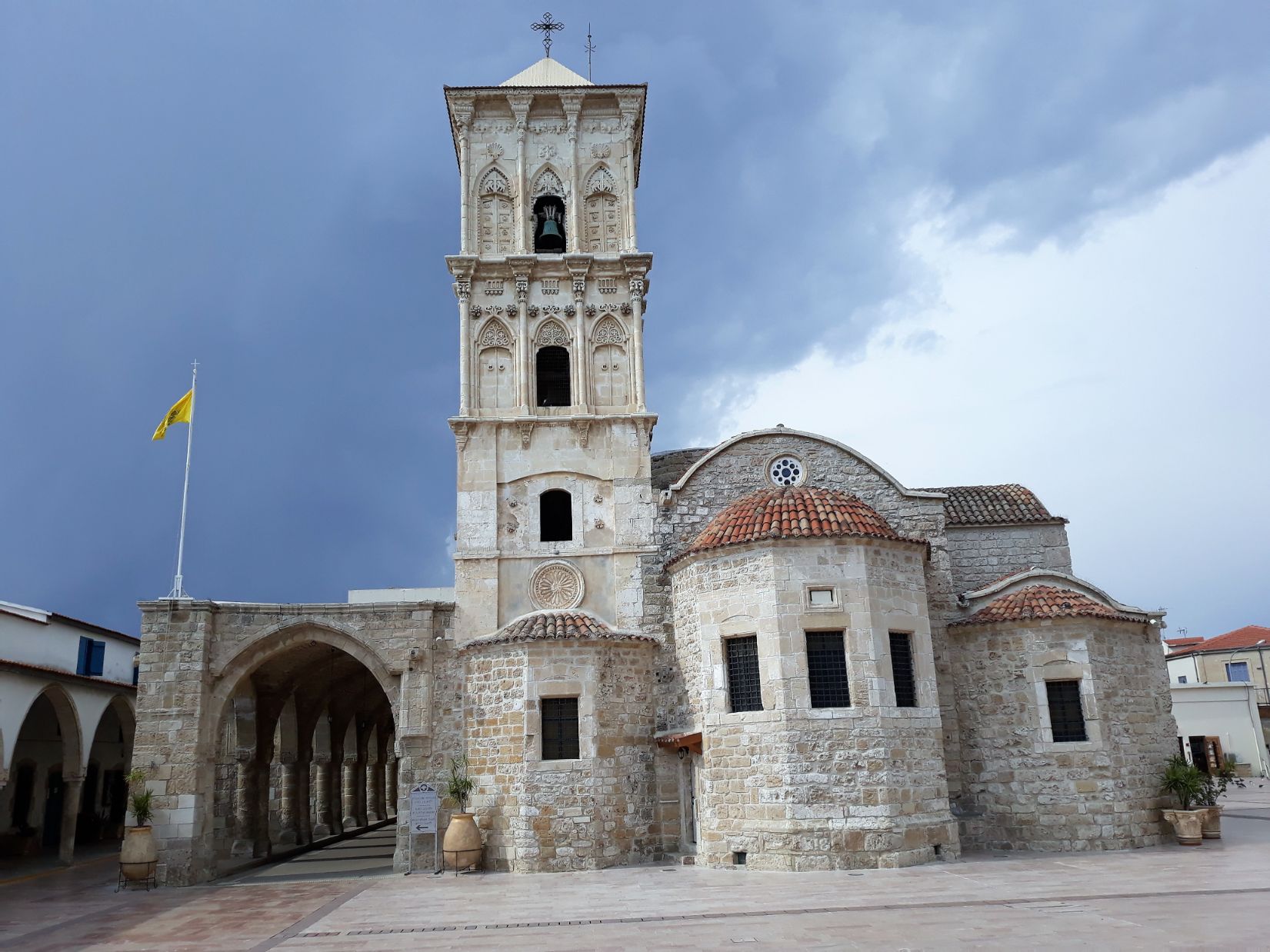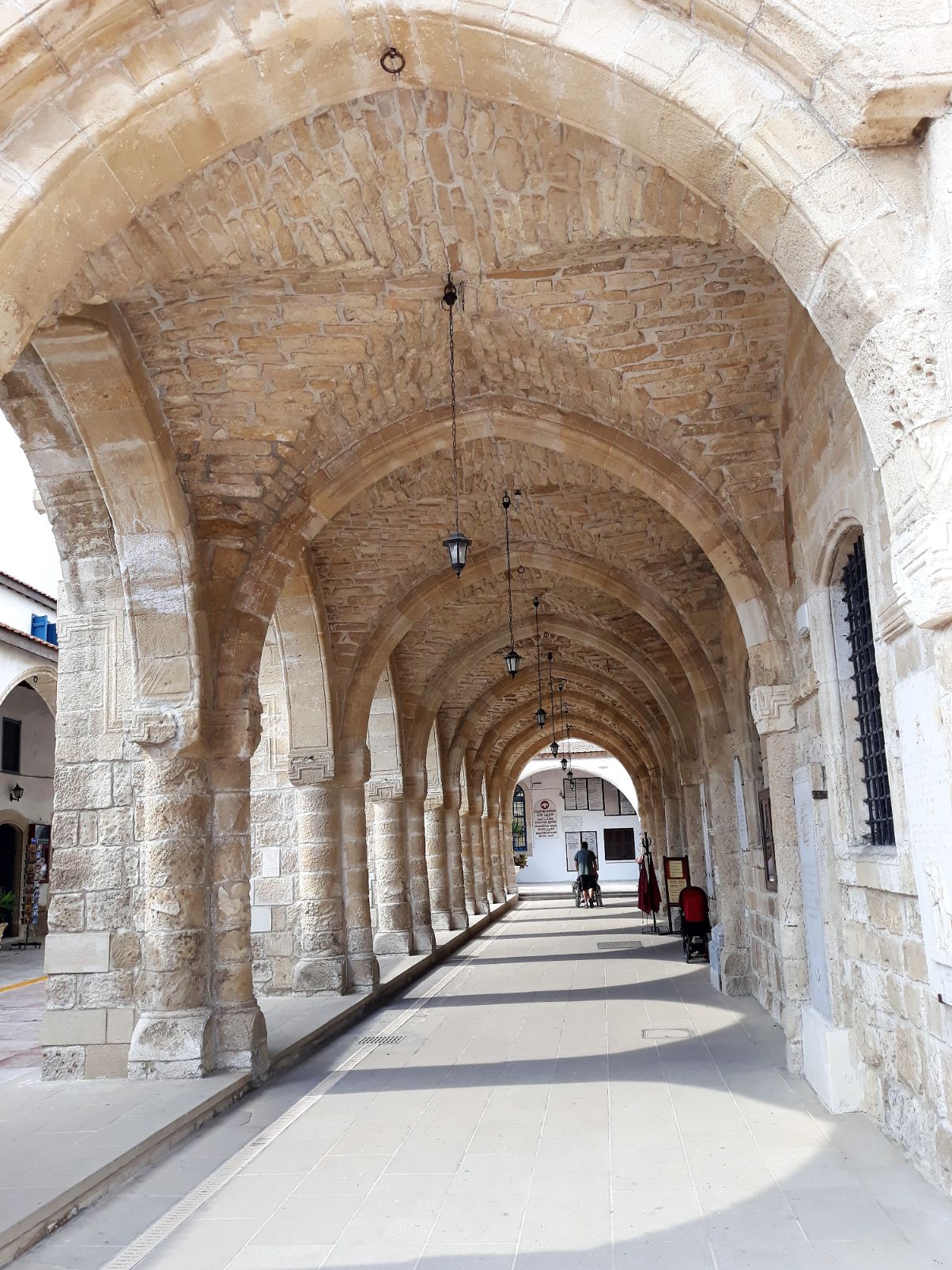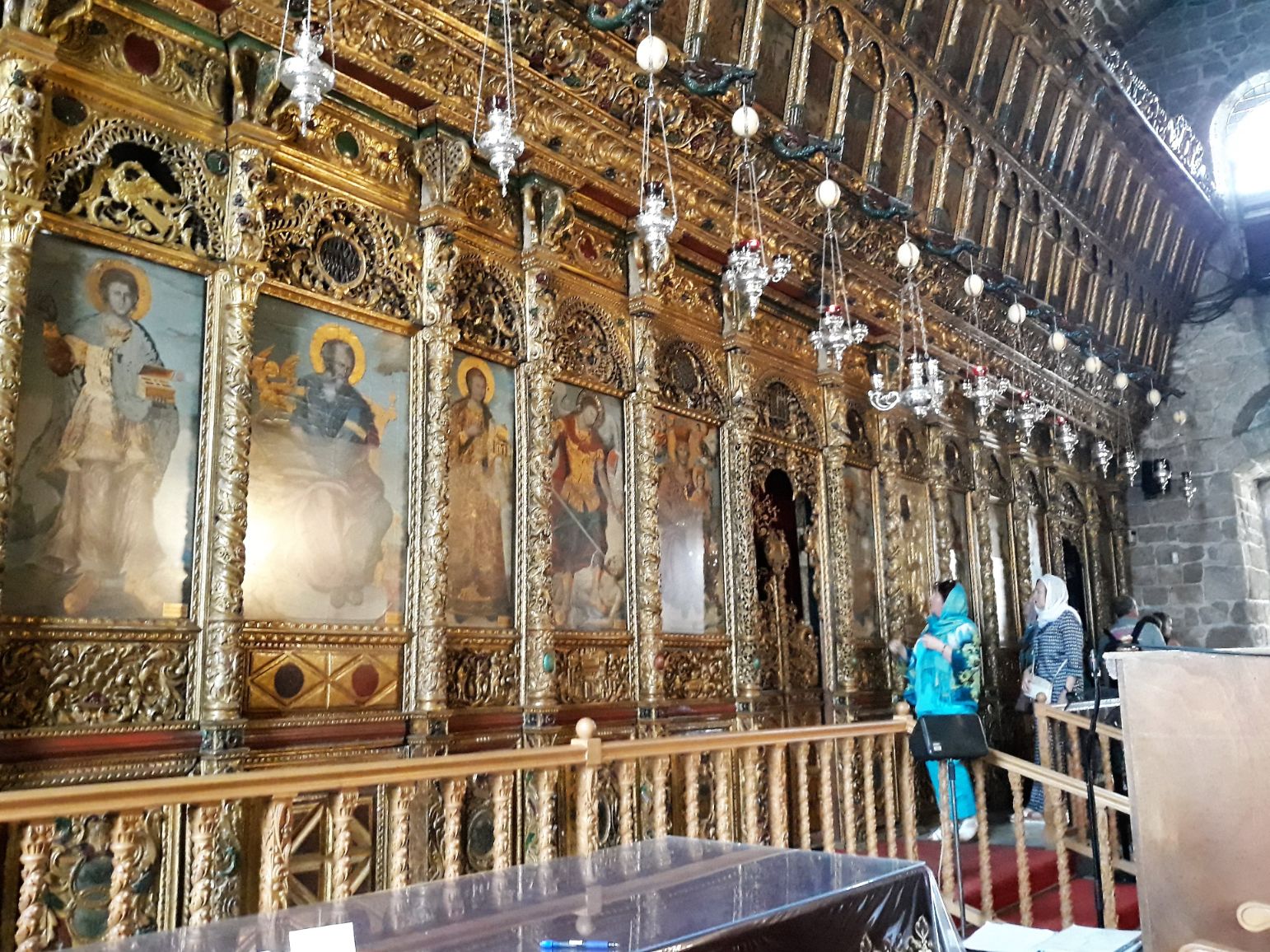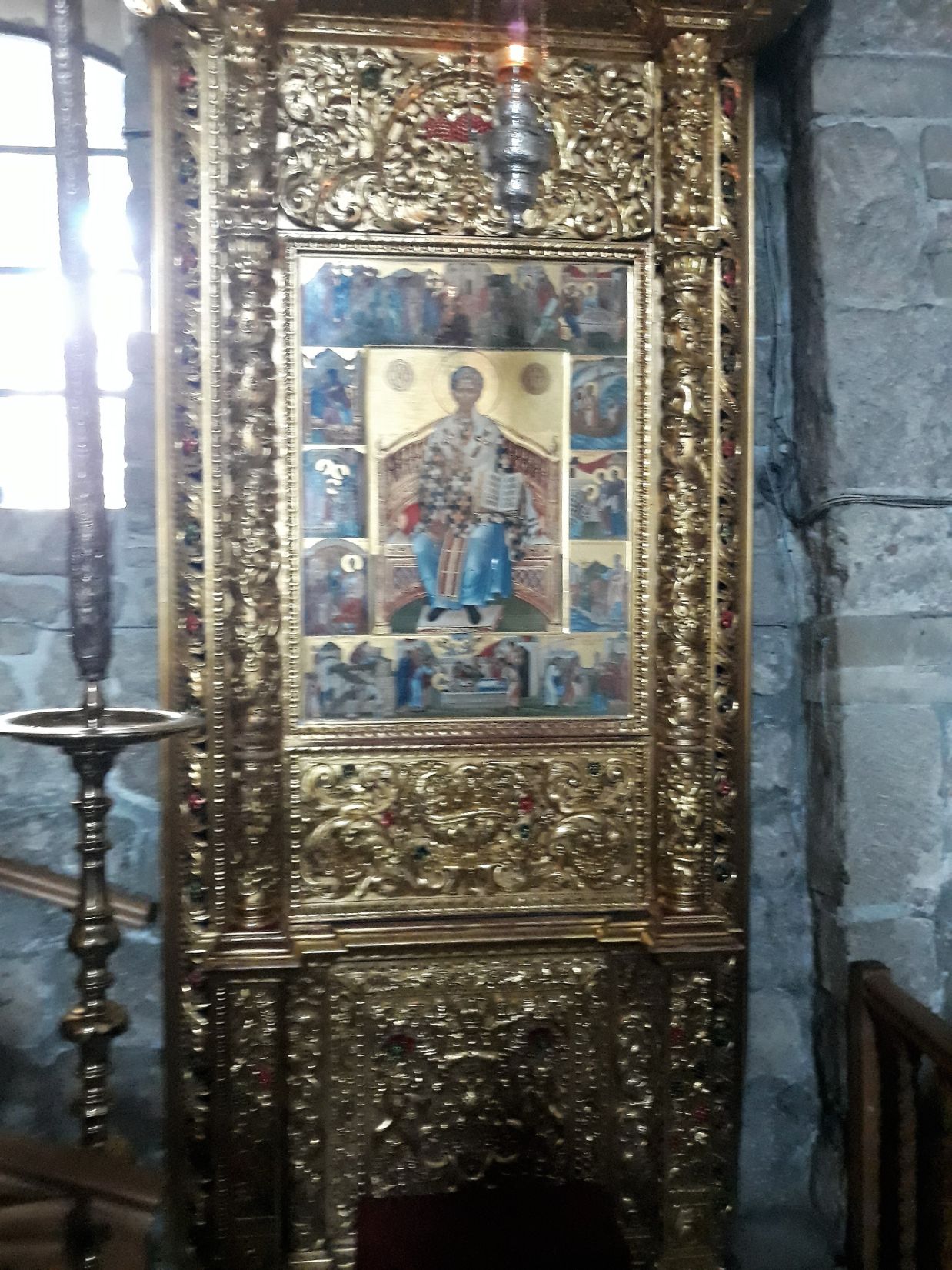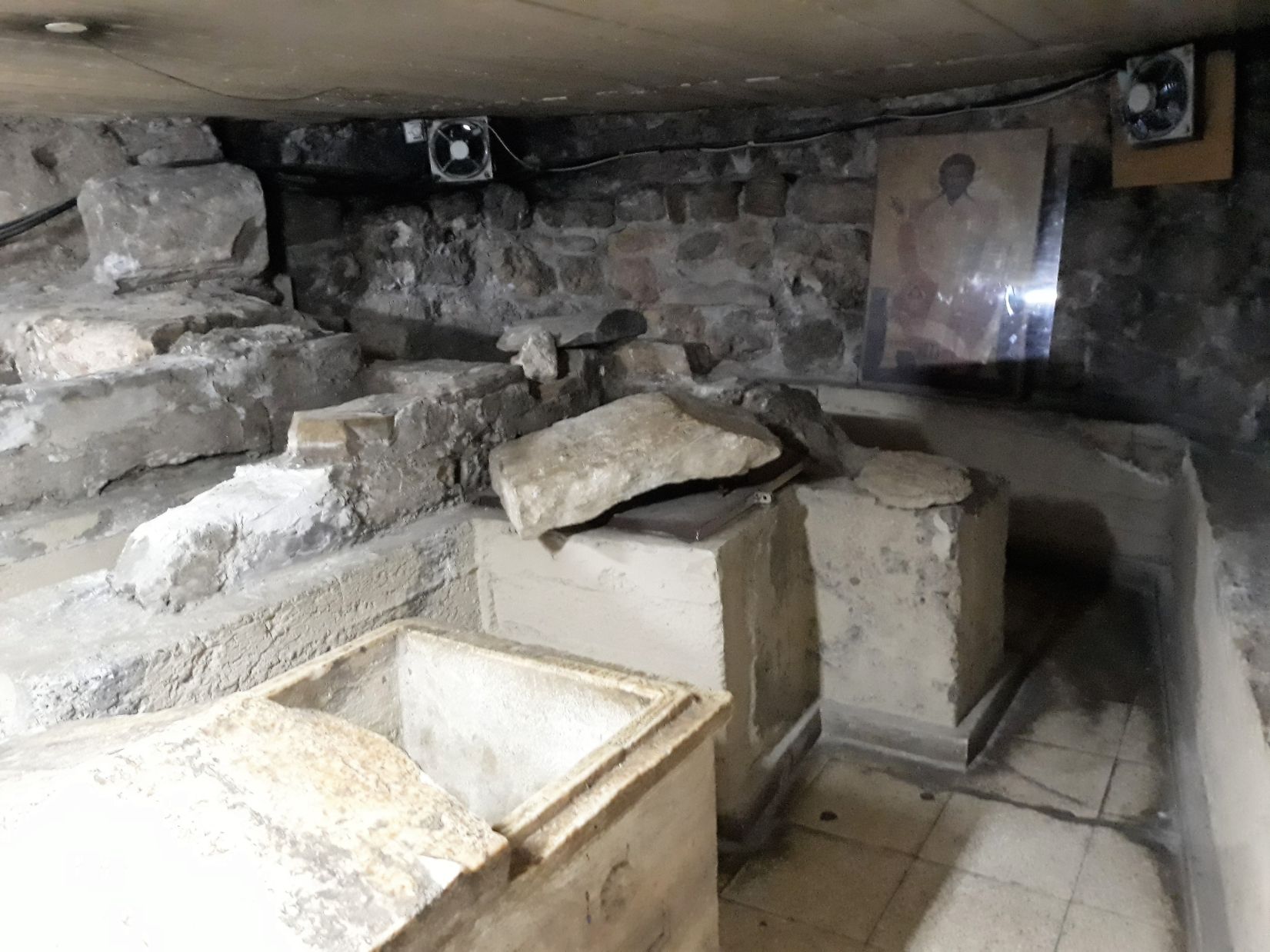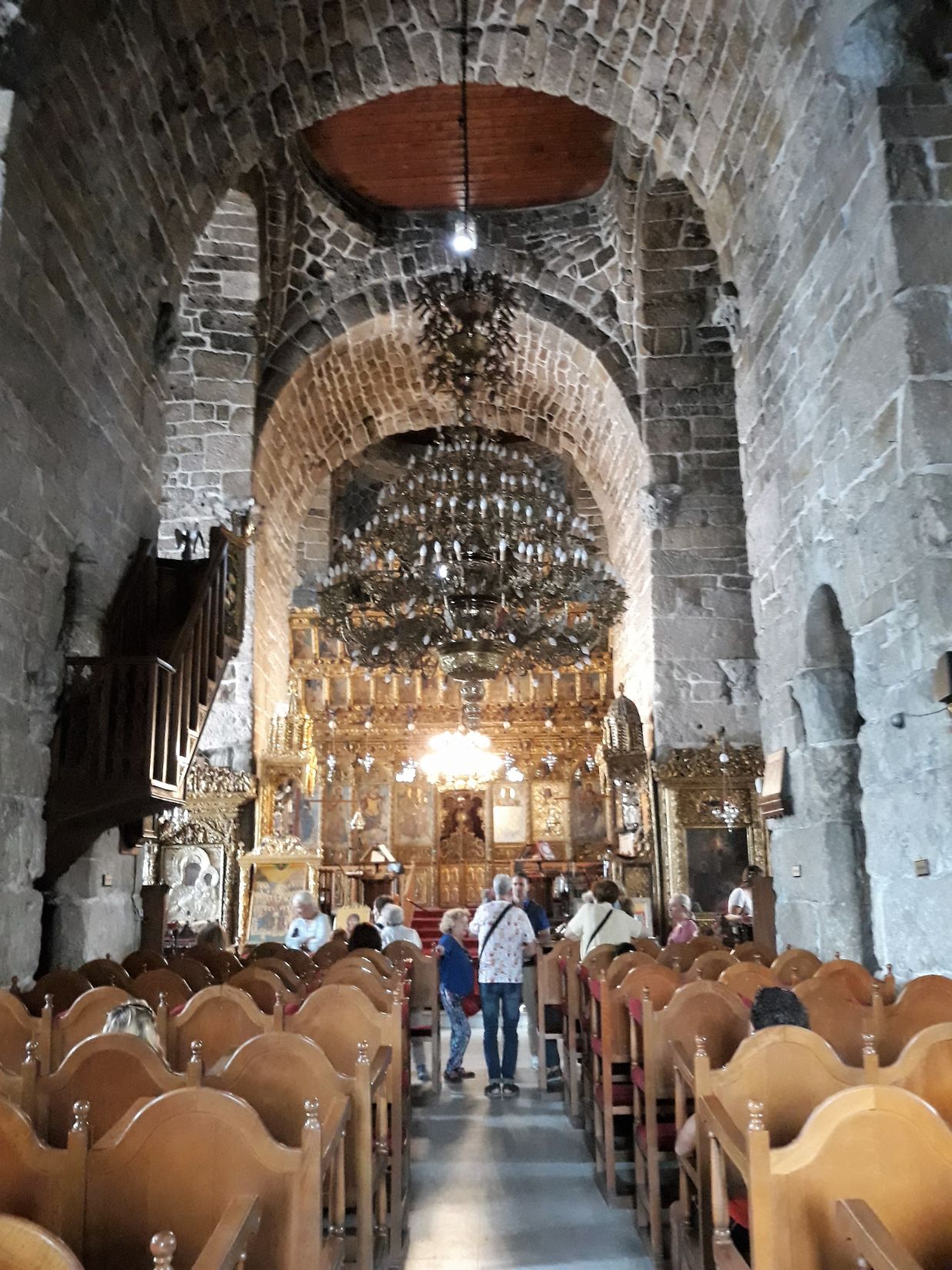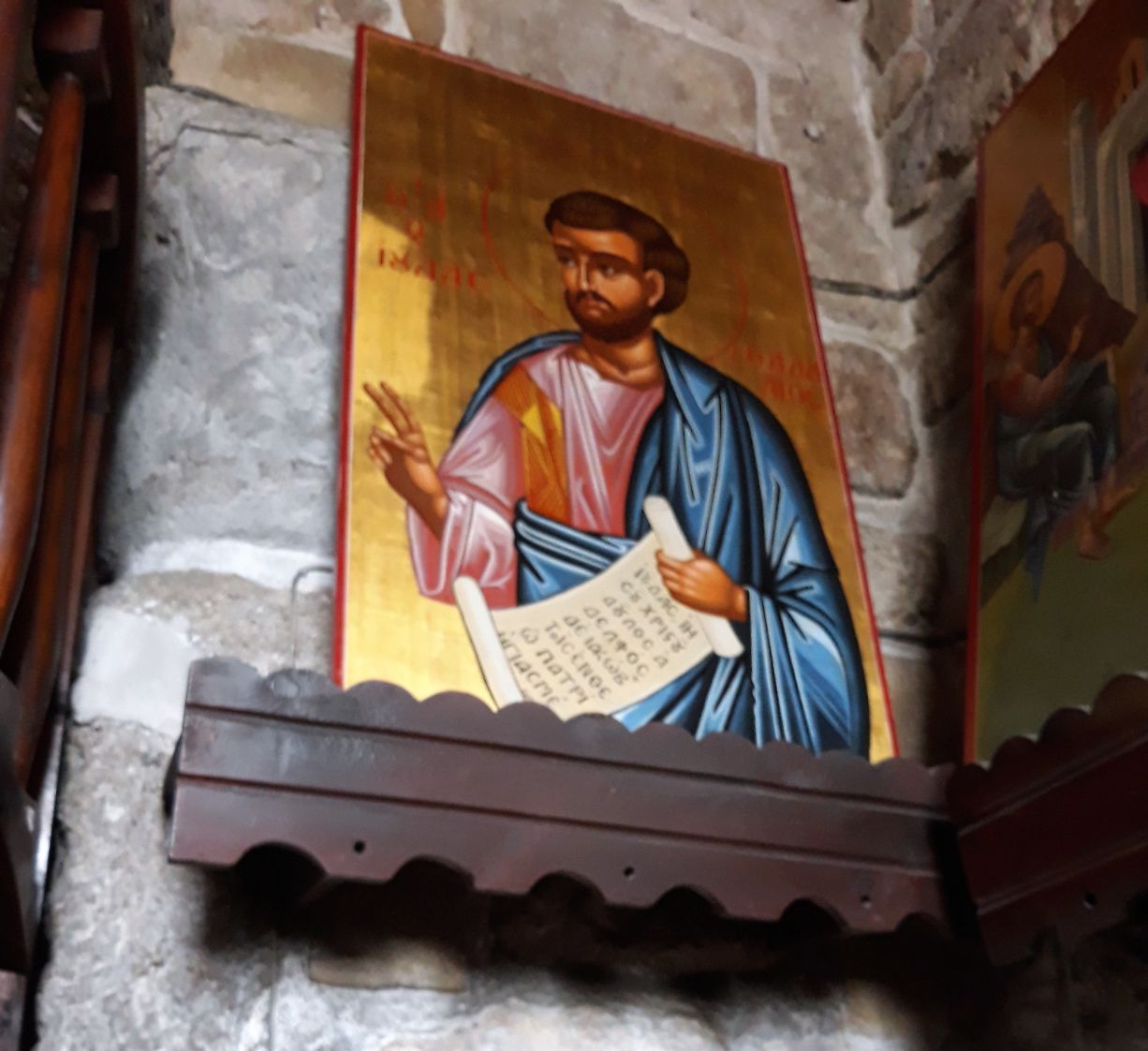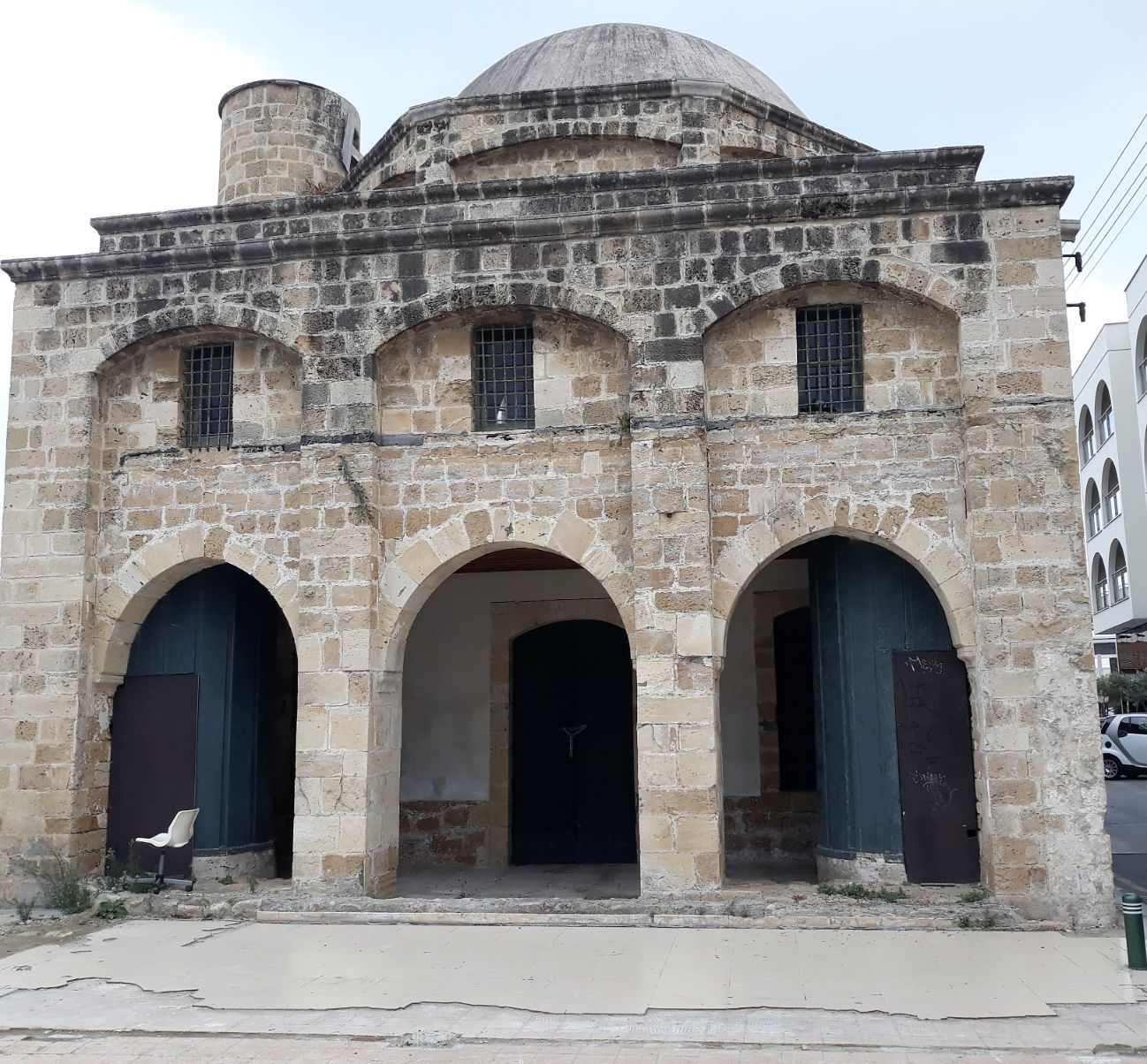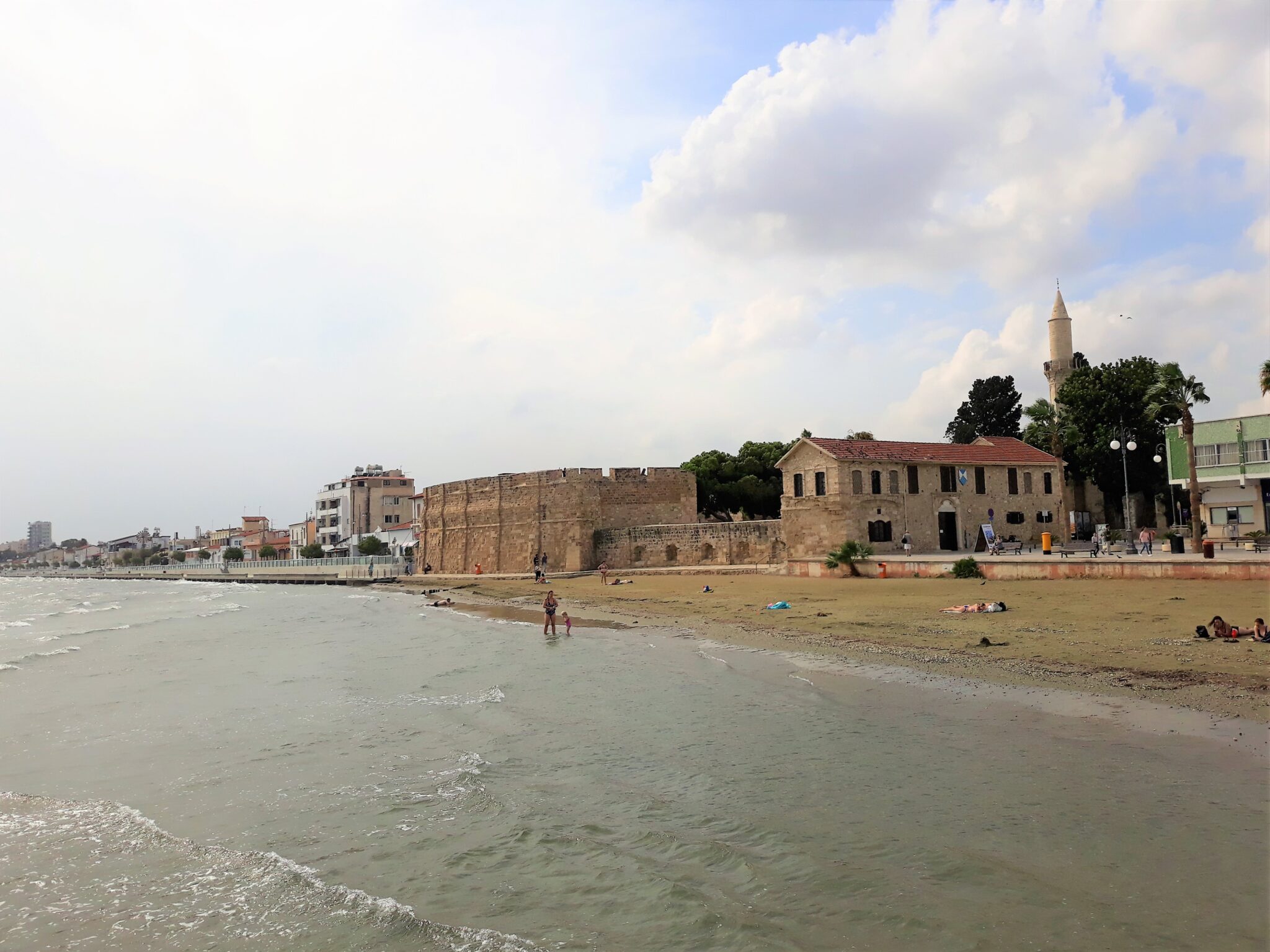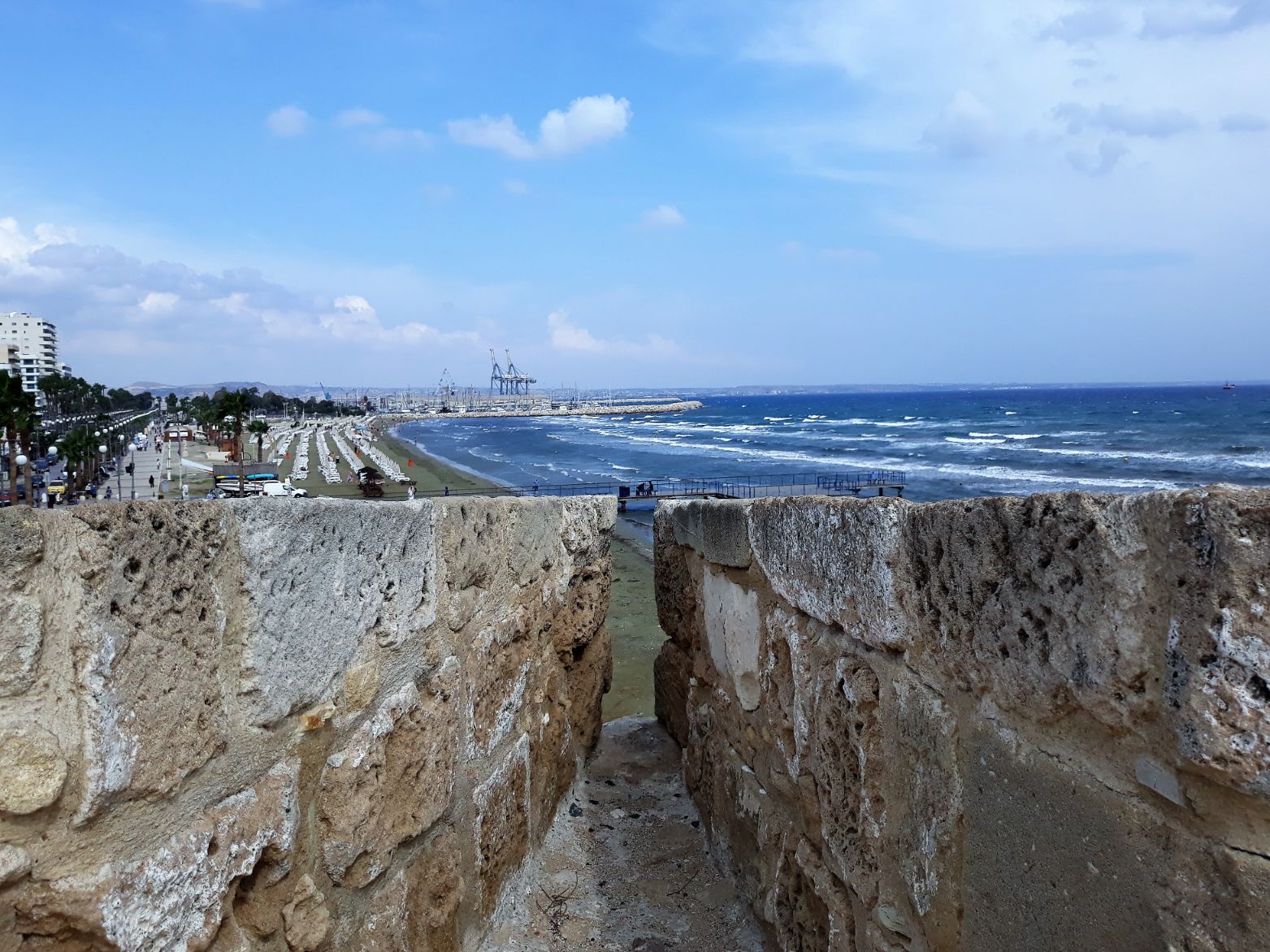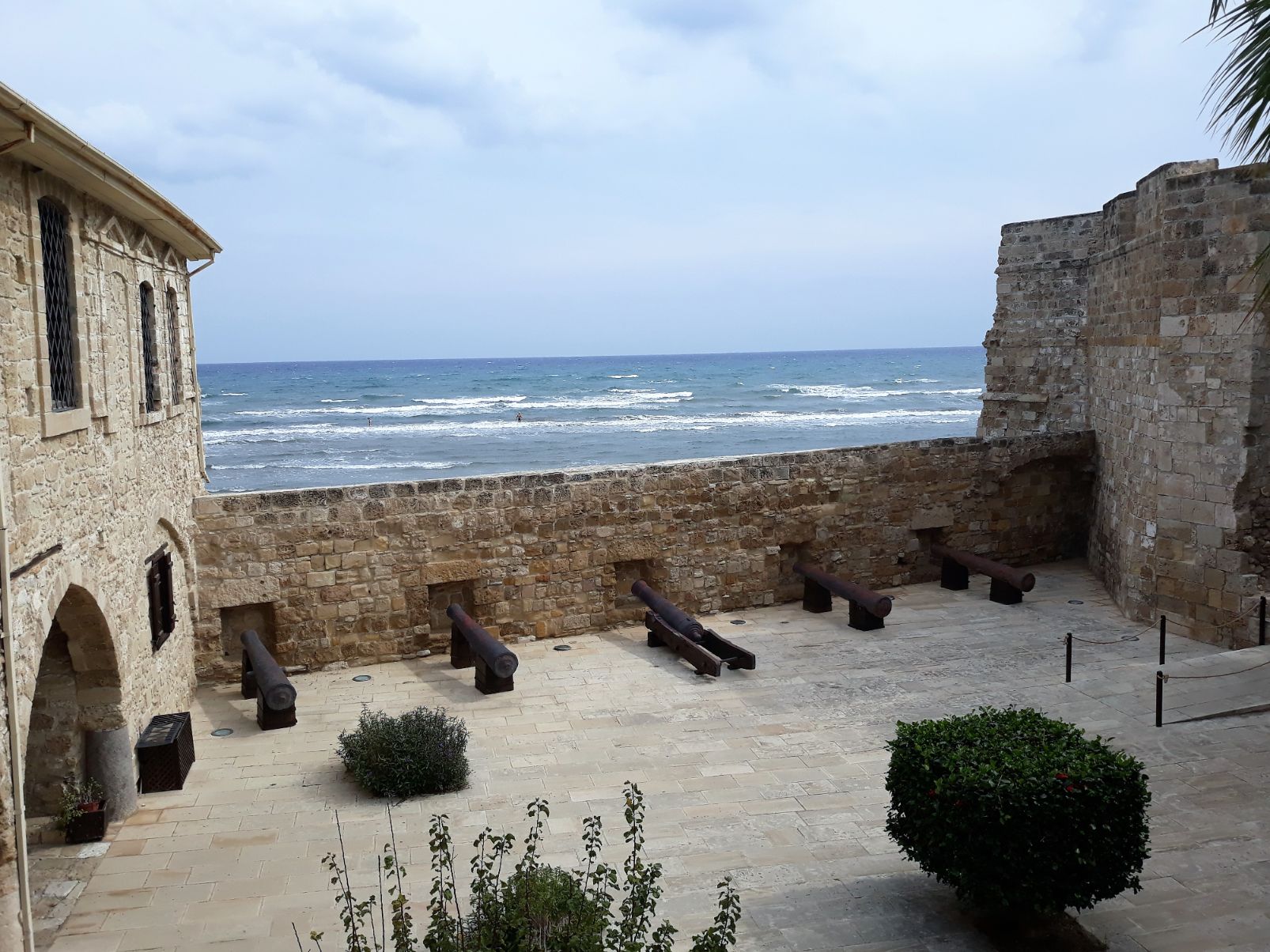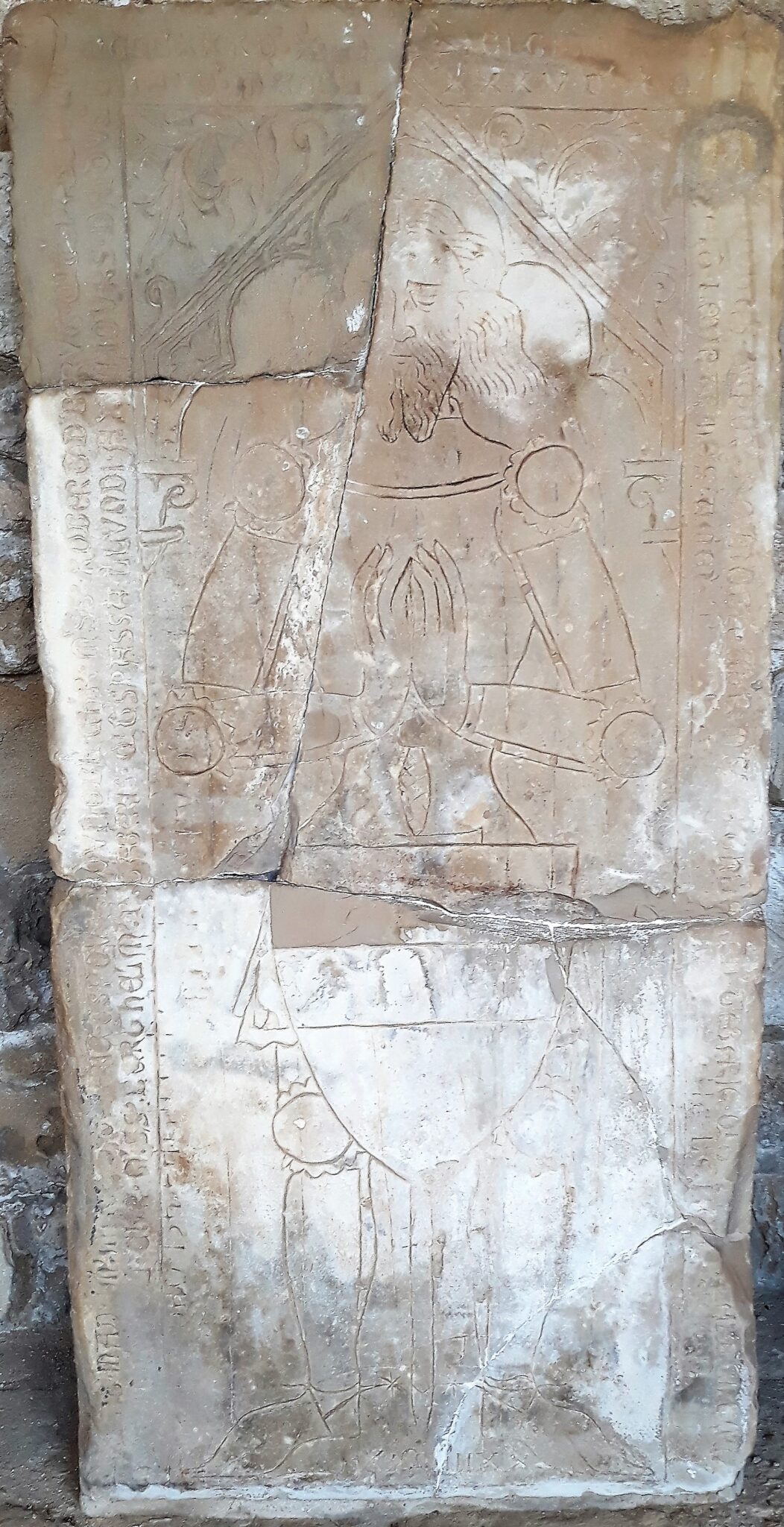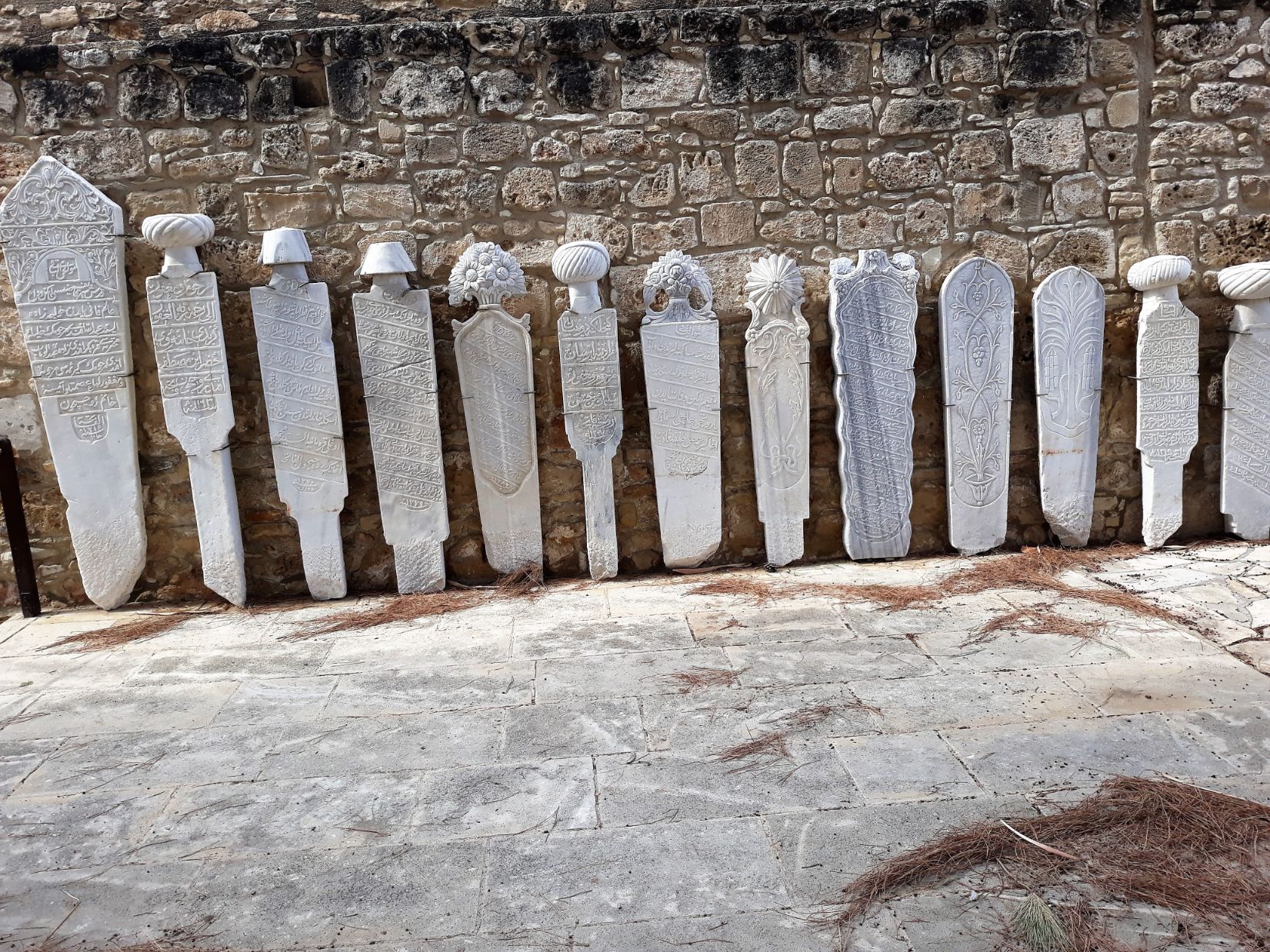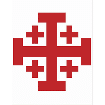Larnaca – 22nd to 23rd October
Weather: Sunny. Temperature: High 27,27 degrees
Tuesday 22nd October
The Rebioz Hotel was located close to the main harbour of Larnaca and a 30-minute walk from the old town where the St.Lazarus Church is located which was my prime destination for today. The hotel did not have a restaurant so I was in need of breakfast when I left at 9.30 am. From the hotel I took the back streets in the hope that I would have views of the harbour but there were none, with commercial buildings lining both sides of the street. After 25 minutes of walking, I reached Finikoudes beach with views out across the mediterranean sea. The beach stretches for a distance of 500 metres and was named after the palm trees planted in 1922. It was a beautiful morning as the waves of the mediterranean sea broke gently on the grey sand of the almost deserted beach.
It was here that I found the Hobo Cafe and sat at a table on the large terrace adjacent to the main street with views of the sea. It was not at all busy, just a few other customers drinking coffee and reading the daily newspaper. Consequently, my order of a full English breakfast was soon served. I was in no rush with the whole day ahead of me and It was a relaxing breakfast.
As I left the cafe to walk along the beach towards St. Lazarus Church, I was surprised at how quiet it was. With temperatures in the high twenties I was expecting to see more people but the rows of beach beds were totally unoccupied and there were just two or three swimmers in the sea. I reached the Turkish quarter with its quiet streets and saw ahead of me a beautifully built minaret rising amongst the palm trees growing in the garden of the Grand Mosque which was originally built in the 13-14th century as St.Catherine’s Church and converted to a mosque during the Ottoman period. Since the 1974 division of Cyprus, the mosque has been used for prayer by visitors and migrants from the African continent and is currently maintained by the Islamic Call Society of Libya.
Not long after I came to Agios Lazaros (Saint Lazarus). Located in its own square in the town centre, the magnificent stone church of Agios Lazaros is one of the most remarkable examples of Byzantine architecture in Cyprus and lies over the tomb of the saint. The following is taken from the notice board of the church:
“One of the most beautiful and oldest churches in Cyprus, is that of Saint Lazarus, the Friend of Christ, in Larnaca. It was built on the very sepulchre of the Saint.
According to the legend, after the resurrection of Christ, there began in Judea, the persecution of the Christians; then Lazarus sought refuge in Cyprus, in ancient Kition (modern day Larnaca), where he became the first bishop of Kition. Here he lived for about thirty years and here he was buried for the second and last time. Over his tomb there was erected, 1100 years ago, the magnificent Byzantine church we see today.
The Church was very well known, in the old days, to the Christian world, and was, until the early years of our century, an indispensable supplement to the pilgrimage to the Holy Land, a second Bethany.
The history of the Church begins in 890 A.D. with the discovery of the sacred remains of the Saint, in his tomb, in the small church that existed then. The remains were in a marble sarcophagus, under the holy altar, and bore the following inscription: “Lazarus the four day dead and friend of Christ”. Then the Emperor of Byzantium, Leo the Sixth, the Wise, carried the Holy relics to Constantinople and in exchange he sent money and technicians to build the Church we see today.
The sacred remains were later lost when the Crusaders had carried them to Marseilles. A small part of these was kept by the people of Kition for their town.
Earlier, Saint Lazarus Church functioned as a Monastery. During the Frankish occupation of Cyprus, it was taken over by the Roman Catholics, from whose hands it passed unto the Turks when they occupied Cyprus, in 1571 from them, the Greeks, (Orthodox), bought it in 1589. For a period (1589-1784), the Latins had the privilege to hold mass twice a year in the northern corner of the Church where the altar is still preserved, as well as, the Latin five-cross emblem at the northern entrance to the Church.
The Church of Saint Lazarus built around 890 A.D., by the Emperor of Byzantium, Leo the Wise, belongs, from the architectural point of view to the “domed churches of Cyprus. It is altogether stone-built with three aisles, three domes in the middle aisle. These domes were cut off from the top, because, according to the legend, during the Turkish conquest of the Island, the Turks pulled them down. In 1750, the portico at the southern side of the Church was built, and in 1857 the present belfry was erected to replace the old one which was pulled down by the Turkish conquerors.
The wood-carved iconostasis is of exceptional craftsmanship. It is one of the finest of its kind in Cyprus. It is the work of the eminent craftsman HadjiSavvas Taliadoros and the icon-painter HadjiMichael. It was made in 1773-1782, and it is adorned with 120 icons large and small, real works of art.
Masterpiece of wood-carving is the Altar (1773) as well as the bishop’s throne (1734). most precious icon of the church is that of Saint Lazarus (12th century), depicting the Saint as a bishop wearing a multi-cross chasubia.
Earlier the interior of the Church was painted in frescos, but these were gradually destroyed by the humidity which prevails in the area. On the north-west side of the yard there is situated a small Protestant cemetery where Consuls and Missionaries were buried in fine marble – carved graves.
During the dark centuries of the Turkish occupation until the first decades of the present century, the Church of Saint Lazarus played an important role as the centre of the religious, social, benevolent and educational activities of the town Scala-Larnaca. Even today. It is a pilgrimage of considerable religious value especially during the last week of the Lent period with the main event, the “Saturday of Saint Lazarus” (the day before Palm Sunday) which marks the beginning of the Passion Week”
There were very few visitors at the Church and the surrounding streets were as quiet as when I had walked into the town earlier in the day. I spent the afternoon just wandering through the Turkish quarter and enjoyed a light lunch in a pavement cafe just watching people going about their daily lives. I also thought about the extraordinary journey that had brought me to this place, the villages, the towns, the cities I had passed through, the mountains I had crossed, and the love I had received from those I had met along the way. The realisation that in 6 days I would walk into Jerusalem knowing that this wonderful journey would be at its end was difficult to understand and accept.
Returning to the hotel I followed the route I had taken this morning along the Finikoudes beach where I stopped at “The Meeting Pub” for a refreshing beer before arriving back at the hotel at just past 6.00 pm.
Wednesday 23rd October
It was an overcast and warm morning as I left the hotel heading for Finikoudes beach and the Hobo Cafe for breakfast. It was exactly as yesterday with just a few tables occupied and also as yesterday I ordered a full English breakfast. As I sat looking out across the Mediterranean sea, the sky began to clear leaving just a fluttering of pure white clouds in the pale blue sky almost matching the sea below with the white crests of the waves gently surfing on a now deep blue sea. I felt incredibly relaxed and well.
After breakfast, I continued along the seafront and I could see ahead of me the medieval with the minaret of the Grand Mosque standing high above the parapets of the fort. The following is the text taken from a notice within the fort:
“The fort which stands on the south end of the seafront of the historic centre of Larnaca town is an Ottoman structure erected in 1625 A.D., according to the inscription above the main entrance.
The fort was initially built towards the end of the 14th century A.D. by the Lusignan king of Cyprus James I (1382-1398). It was part of the chain of the defensive works which were constructed at the time, in order to guard and protect the southeast part of the island, which stretches from Cape Pyla to Akrotiri Bay in Lemesos. This area includes the ports of Larnaca and Lemesos, which were second and third in importance respectively, after the port of Ammochostos (Famagusta). Since the above area is not naturally protected, it was deemed necessary to construct forts, keeps and watchtowers in order to protect the two ports, especially after the occupation of Ammochostos by the Genoese in 1373. The architectural type of the earlier fort is not known. Certain parts of this medieval architectural phase were incorporated in the Ottoman building and can be viewed at the south and east sections of the fort. It must be mentioned that the fort was ransacked, destroyed and rebuilt several times, since it was at the centre of conflicting economic interests, which had to do mainly with the export of salt from the port of Larnaca.
During the period of Venetian rule the fort was strengthened as a result of the upgrading of the port of Larnaca, which played at the time a vital role in the trade of salt and other goods to and from the syro-palestine coast and of course, with the Western World. Towards the end of the Venetian period and in view of the Ottoman attack, the Venetians had chosen to base the defence of the island on the three towns of Ammochostos, Lefkosia and Keryneia, and as a result they abandoned the fort of Larnaca. The ottoman troops were actually landed near the fort and they decided to use the port of Larnaca as a base for their fleet. The Ottomans rebuilt the fort in 1625, since it had fallen into ruins by then. The fort was armed with cannons and a small garrison of janissaries was stationed there. By the middle of the 18th century however, the fort was in decline and its main role was the firing of cannons to salute vessels passing by.
Already from the period of the Ottoman occupation and during the British colonial period, the fort was used as a prison and as a police station until the middle of the 20th century.
In 1948 the fort was converted into the Larnaca District Archaeological Museum until 1969, when the current Museum came into being. The first floor of the gatehouse is still used as a museum, where artefacts of the Byzantine, Medieval and Ottoman period are displayed. The courtyard of the fort is used today for cultural events.”
The fort is in a commanding position and as I stood on the parapets looking out across the vast expanse of the Mediterranean sea it was easy to imagine the vision seen by those on watch of the approaching fleets of warships that have attacked the port of Larnaca in the past.
After the fort I walked a little in the old town and visited the now disused Zachouri mosque and then returned to the Hobo Cafe before returning early to the hotel, to prepare for my flight to Tel Aviv tomorrow.



